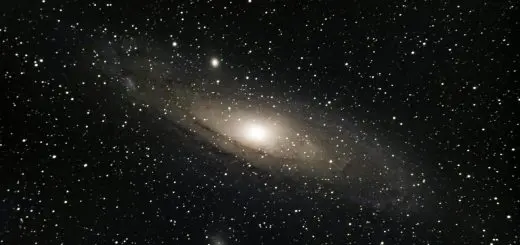How Did Life Begin on Earth? Theories and Mysteries

Looking for more amazing products? Check out our online store and explore our collection here! Happy shopping!
Before diving in, please note: This post is for informational purposes only. If you’d like to know more about how we approach topics, feel free to check out our friendly Disclaimer Page.
Hey there, amazing readers! 
We’re committed to delivering quality posts, and your support (even just sticking around despite the ads) means everything to us. So, bear with us, and thanks for helping us keep the good vibes rolling. Now, on to the fun stuff!
TRANSLATE BUTTON AT THE END OF THE ARTICLE
A Quick Overview
The question of how life began on Earth is one of those age-old mysteries that has puzzled scientists, philosophers, and curious minds like yours and mine for centuries.
From the spark of a single cell to the intricate ecosystems we see today, the journey of life’s origins is filled with compelling theories and tantalizing enigmas.
In this article, we will dive deep into the various hypotheses surrounding life’s inception, the conditions that facilitated it, and the ongoing quest to understand our origins.
So, grab a comfy seat and let’s embark on this fascinating journey together!
A Spark of Life: The Quest for Origins Begins
The quest to understand how life began dates back thousands of years, rooted in both scientific inquiry and philosophical contemplation.
Think about it: our ancestors peering up at the stars, wondering about their own existence.
Fast forward to today, and we’ve come a long way in unraveling the tapestry of life.
Scientists have proposed numerous theories, each more exciting than the last.
Some of the most popular include the primordial soup theory, hydrothermal vents, and the RNA world hypothesis.
Each theory offers a unique perspective, but they all share a common goal: explaining how inanimate matter transitioned into living organisms.
One of the most thrilling aspects of this inquiry is how it intertwines science with our own sense of identity.
Understanding where we come from helps shape our view of the world.
It’s like piecing together an ancient puzzle, where every fragment holds a story.
As we explore these theories, we must approach them with an open mind.
Each offers insights and possibilities about the origins of life, yet none provide a definitive answer.
That’s part of the allure, isn’t it?
The journey is just as important as the destination.
Ancient Earth: Conditions for Life’s Arrival
To grasp how life kicked off, we need to step back in time—way back to Earth’s early days.
Picture a planet without the hustle and bustle we know today.
It was a harsh environment, teeming with volcanic activity and bathed in a toxic atmosphere.
Around 4 billion years ago, our planet was a very different place.
The atmosphere was rich in methane, ammonia, and other gases, but lacked oxygen.
Think of it as a primordial stew, bubbling away in a vast cauldron.
The oceans were likely more acidic, creating a hostile environment for any potential life forms.
However, it’s essential to note that this seemingly unwelcoming atmosphere could have been a breeding ground for life.
Some researchers argue that the energy from lightning strikes, ultraviolet radiation, and volcanic activity could have driven the chemical reactions necessary for life to emerge.
Moreover, the presence of water was crucial.
Oceans provided a stable environment for chemical reactions.
They acted like a giant mixing bowl, where various elements combined in ways we are just beginning to understand.
In essence, Earth’s early conditions created a paradox: a harsh world that also hosted the potential for life.
Explore the Path to Spirituality and Enlightenment – Start Here.
This tension hints at the resilience of life itself, which can emerge even in the most unlikely circumstances.
The Primordial Soup: A Recipe for Life
Ah, the primordial soup.
It’s one of those phrases that sounds like it could be the title of a science fiction novel.
But it encapsulates a fascinating theory about the origins of life.
The primordial soup theory suggests that life began in a warm, nutrient-rich environment—think of it as a cosmic kitchen.
The idea is that organic compounds formed from simple molecules in this soup and eventually led to self-replicating entities.
In 1953, Stanley Miller and Harold Urey conducted an experiment that brought this theory into the spotlight.
They recreated early Earth conditions in a lab, combining water, ammonia, methane, and hydrogen.
They then zapped it with electricity to simulate lightning.
The result?
An array of organic compounds, including amino acids—the building blocks of proteins.
This experiment sparked a wave of excitement.
It suggested that life could arise naturally from non-living substances under the right conditions.
However, there are critics of this theory.
Some argue that the conditions Miller and Urey used were too simplistic.
Nevertheless, the primordial soup remains an essential piece of the puzzle.
It highlights the idea that life didn’t just appear out of thin air; it emerged from a complex interplay of chemistry and environmental factors.
From Molecules to Microbes: The First Life Forms
Now that we’ve cooked up some organic compounds, the next question is: how did these molecules come together to form the first life forms?
The transition from simple molecules to complex microorganisms marks a significant leap in our understanding of life’s origins.
Scientists believe that life likely started with simple, single-celled organisms.
These early life forms were probably prokaryotes—simple cells without a nucleus.
They were tiny, maybe no larger than a few micrometers, yet they packed a punch in terms of adaptability.
One of the most intriguing concepts is the idea of protocells.
These hypothetical structures could have been the stepping stones from individual molecules to the first living organisms.
Protocells may have formed when lipid molecules assembled into tiny, membrane-bound structures, creating a distinct environment for chemical reactions.
Over time, these protocells would have undergone evolution, driven by natural selection.
Simple molecules that could replicate themselves had a survival advantage, paving the way for increasingly complex organisms.
It’s a bit like watching a toddler take their first steps.
From simple beginnings, life learned to walk, run, and eventually thrive in a multitude of environments.
The Role of Hydrothermal Vents: Nature’s Ovens
Imagine the deep ocean, where the sun’s rays cannot penetrate.
In this dark, mysterious world lie hydrothermal vents, often called "black smokers." These underwater geysers release hot, mineral-rich water, creating a unique habitat teeming with life.
Hydrothermal vents present a compelling alternative to the primordial soup theory.
Some scientists propose that life may have originated in these extreme environments, where heat and chemical reactions abound.
The temperatures near these vents can reach up to 400 degrees Celsius (752 degrees Fahrenheit).
Yet, bizarrely, life flourishes there.
Organisms known as extremophiles thrive at these depths, feeding on sulfur and other chemicals spewed from the vents.
The chemistry happening around these vents is rich and complex.
Researchers believe that the minerals found in these environments could have catalyzed the formation of the first organic molecules.
Imagine a natural laboratory, where life could emerge amidst the swirling currents and searing heat.
This theory gives us a fresh perspective on life’s origins.
Instead of a calm pond, life may have begun in one of the planet’s most extreme environments.
It’s a testament to life’s resilience and ability to adapt.
Panspermia: Did Life Come from Outer Space?
Now, let’s take a cosmic detour!
Panspermia is the idea that life didn’t start on Earth at all.
Instead, it suggests that microorganisms might have hitchhiked on comets or meteorites and landed on our planet, sparking the beginning of life as we know it.
This concept is both exciting and controversial.
Imagine tiny microbes drifting through the vastness of space, waiting for their chance to settle on a welcoming planet.
Some scientists argue that certain extremophiles could survive the harsh conditions of space travel.
The evidence for panspermia is indirect but intriguing.
For example, organic compounds have been found on comets and meteorites.
These compounds are similar to those thought to be essential for life.
However, the leap from organic compounds to fully formed life is still a massive one.
Panspermia raises a host of questions.
If life came from elsewhere, where did it originate?
Is Earth just one stop on the cosmic highway?
This theory pushes us to think beyond the confines of our planet, considering the possibility that life is a universal phenomenon.
It’s a bit like chasing a mirage—thrilling yet elusive.
Whether or not panspermia holds the key to understanding life’s origins remains to be seen, but it certainly adds a cosmic twist to our exploration.
RNA World Hypothesis: The First Genetic Code
Next up is a spicy theory that puts RNA at the forefront of life’s origins—the RNA world hypothesis.
This concept proposes that RNA molecules were the first self-replicating entities, predating DNA and proteins in the story of life.
Why RNA, you ask?
RNA is unique because it can store genetic information like DNA and can also serve as a catalyst for chemical reactions, much like proteins.
This dual role makes RNA a strong candidate for the first life form.
The idea is that early RNA molecules formed in Earth’s primordial conditions, perhaps within the oceans or near hydrothermal vents.
Once these molecules began to replicate, they kicked off a process of evolution, leading to more complex life forms.
What’s fascinating about this hypothesis is the implication that life doesn’t necessarily need DNA to thrive.
If RNA was the first genetic material, it could have laid the groundwork for the DNA-based life we see today.
This theory flips the script on traditional thinking about genetics while opening up a world of possibilities.
It’s like realizing that the first chapter of a book is not what you expected.
Metabolism First: Life Without DNA?
Speaking of flipping scripts, some scientists advocate for the “metabolism-first” theory.
This idea posits that life may have originated from complex chemical reactions before the advent of genetic material like DNA or RNA.
Imagine a world where self-sustaining chemical processes occurred, forming the basis for life.
This theory suggests that simple molecules underwent reactions to create more complex compounds, leading to a primitive form of metabolism.
The notion challenges the traditional view that genetic material must come first.
Instead, it argues that life could have emerged from interconnected chemical pathways, eventually leading to structures capable of replication.
It’s a bit like cooking: you might focus first on preparing your ingredients before crafting the final dish.
In this case, life might have started with the right “ingredients” of chemical reactions, paving the way for more complex organisms to develop later.
While the metabolism-first hypothesis is intriguing, it raises more questions than answers.
How did these reactions occur?
What sparked the transition from raw chemistry to living beings?
The Role of Lightning: Shocking Life into Existence
If you’ve ever watched a thunderstorm, you know that lightning can be awe-inspiring.
But could it also have played a role in the origins of life?
Some scientists propose that electrical discharges from lightning might have provided the energy needed to create complex organic molecules.
Consider this: lightning can generate intense heat and pressure, conditions that can facilitate chemical reactions.
When lightning strikes water, it can split molecules apart, creating reactive compounds that could then combine to form organic substances.
This theory dovetails nicely with the primordial soup idea.
While the “soup” provided a medium for reactions, lightning supplied the spark needed for them to occur.
Experiments have shown that replicating lightning conditions can produce amino acids—the building blocks of life.
So the next time you hear thunder, think of it as a potential spark for life itself.
This theory also emphasizes the interconnectedness of natural phenomena.
Just like in life, sometimes it takes a little shock to get things moving!
Evolutionary Steps: How Simple Life Became Complex
Once we have our first simple life forms, the next big question is: how did they evolve into the complex organisms we see today?
Evolution, the process of change over time, is central to understanding this journey.
The earliest life forms were likely simple prokaryotes, which thrived for billions of years.
However, as conditions on Earth changed, so did life.
The introduction of oxygen, primarily through photosynthesis, marked a turning point.
With oxygen in the atmosphere, life could evolve into more complex organisms.
Eukaryotes, which have a nucleus, emerged and eventually led to multicellular life.
The transition from simple to complex is like watching a caterpillar metamorphose into a butterfly—transformative and breathtaking.
Through natural selection, species adapted to their environments, leading to an explosion of biodiversity.
Each evolutionary step is a testament to life’s resilience and adaptability.
This process reminds us that life is not static; it’s a continuous journey of change.
Just as we grow and learn, so too did our early ancestors.
Mysteries Remain: Unsolved Questions About Origins
Despite the progress we’ve made, many mysteries linger around the origins of life.
Questions abound, tantalizing scientists and thinkers alike.
For starters, how did the first living organisms emerge from a soup of organic compounds?
Did they arise spontaneously, or was there another catalyst?
Additionally, the transition from simple molecules to self-replicating entities remains unclear.
How did those first steps toward life occur?
The existence of extremophiles raises more questions.
If life can thrive in extreme conditions, what does that mean for the search for life elsewhere in the universe?
These mysteries remind us that while we’ve made strides in understanding life’s origins, we still have much to learn.
Each discovery opens new doors, leading us further into the unknown.
The Ongoing Search: Discovering Life Beyond Earth
As we ponder life’s origins on Earth, our curiosity doesn’t stop at our own planet.
The search for extraterrestrial life is an exciting frontier that captures our imagination.
Scientists are exploring other celestial bodies, such as Mars, Europa, and Enceladus.
These places might harbor the ingredients necessary for life.
For instance, subsurface oceans on these moons could provide the right conditions for microbial life to exist.
The ongoing research into extremophiles also informs this quest.
If life can thrive in Earth’s harshest environments, could similar life forms exist elsewhere?
Moreover, missions to collect samples from asteroids and comets may provide insights into the building blocks of life.
What we find could reshape our understanding of life’s origins on Earth and beyond.
The search for life beyond our planet is not just about finding aliens; it’s about understanding our place in the cosmos.
Each step we take is a leap into the unknown, guided by the hope of discovery.
Conclusion
The question of how life began on Earth is a captivating journey through time, science, and imagination.
From the primordial soup to the depths of hydrothermal vents, each theory offers a glimpse into the intricate dance of chemistry and biology.
While we’ve made significant strides in understanding our origins, numerous mysteries remain.
As we continue to explore our planet and beyond, we embrace the adventure of discovery.
Each finding adds a new piece to the puzzle, reminding us of the resilience and complexity of life.
So, let’s keep asking questions and seeking answers—after all, the story of life is far from finished!

The Enlightenment Journey is a remarkable collection of writings authored by a distinguished group of experts in the fields of spirituality, new age, and esoteric knowledge.
This anthology features a diverse assembly of well-experienced authors who bring their profound insights and credible perspectives to the forefront.
Each contributor possesses a wealth of knowledge and wisdom, making them authorities in their respective domains.
Together, they offer readers a transformative journey into the realms of spiritual growth, self-discovery, and esoteric enlightenment.
The Enlightenment Journey is a testament to the collective expertise of these luminaries, providing readers with a rich tapestry of ideas and information to illuminate their spiritual path.
Our Diverse Expertise
While our primary focus is on spirituality and esotericism, we are equally passionate about exploring a wide range of other topics and niches 

To ensure we provide the most accurate and valuable insights, we collaborate with trusted experts in their respective domains 
Our blog originally focused on spirituality and metaphysics, but we’ve since expanded to cover a wide range of niches. Don’t worry—we continue to publish a lot of articles on spirituality! Frequently visit our blog to explore our diverse content and stay tuned for more insightful reads.
Hey there, amazing reader! 
Check out our store here and take a peek at some of our featured products below! Thanks for being awesome!













